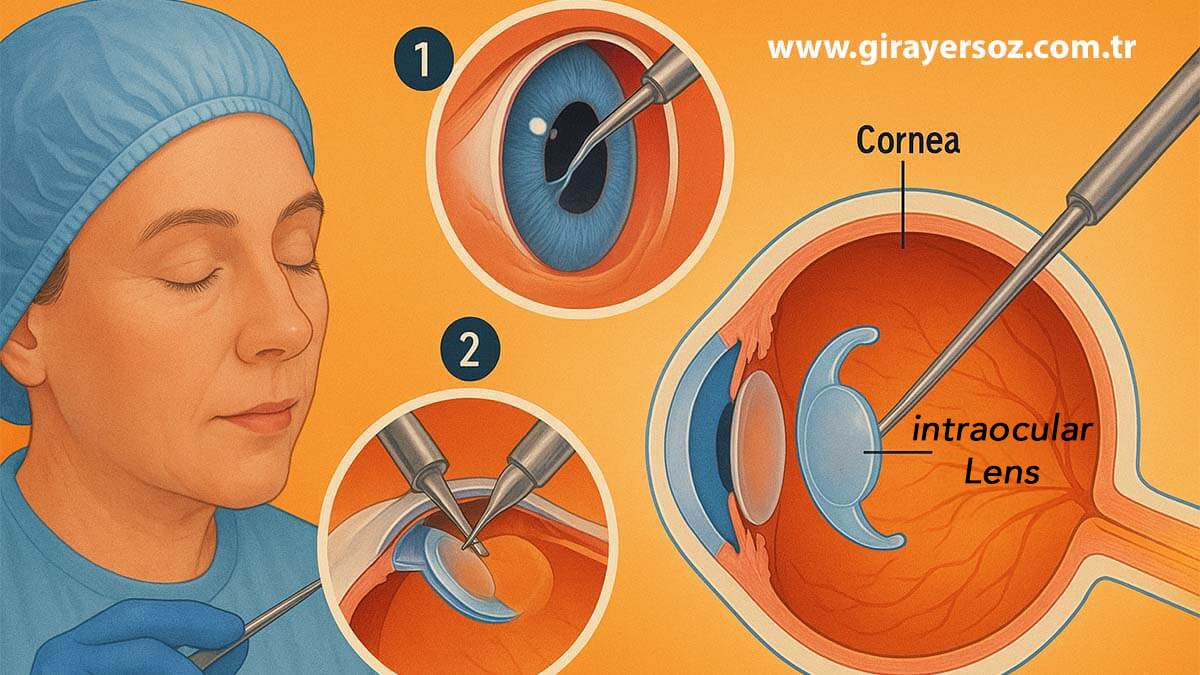Smart (premium) lenses, including multifocal and trifocal intraocular lenses (IOLs), have long been used in the treatment of cataracts and various vision impairments. These lenses are designed to provide clear vision at multiple distances—near, intermediate, and far—reducing or eliminating the need for glasses.
In recent years, a new generation of smart lenses called EDOF (Extended Depth of Focus) lenses has been developed. These advanced lenses enhance visual clarity over a continuous range of distances, offering a more natural and seamless visual experience.
This article explores what smart lenses are, the eye conditions they are used to treat, who is eligible for the procedure, and how smart lens surgery is performed.
What Is a Smart (Premium) Lens?
Smart lenses refer to multifocal, trifocal (three-focus), and EDOF (Extended Depth of Focus) intraocular lenses that are implanted in the eye after the natural lens is removed. These lenses are designed to provide clear vision at multiple distances—near, intermediate, and far—significantly reducing or even eliminating the need for glasses.
Contrary to popular belief, smart lenses do not actively focus or zoom like a camera lens. Instead, they work by distributing light across different focal points, allowing the eye to see clearly at various distances.
Interestingly, the term “smart lens” originated in Turkey and has since been adopted in other countries to explain the technology to patients. Among ophthalmologists, however, these are more commonly referred to as “premium lenses” due to their advanced design and functionality.
Purpose of Smart Lenses (Premium Intraocular Lenses)
The primary goal of smart lenses—also known as premium intraocular lenses—is to reduce or eliminate the need for glasses in individuals over the age of 45–50 who rely on eyewear for both near and distance vision. These lenses can also be implanted during cataract surgery, making them a dual-purpose solution for both vision correction and cataract treatment.
In essence, smart lens surgery and cataract surgery are fundamentally the same procedures. The main difference lies in timing: in cataract surgery, the cloudy (cataract-affected) natural lens is removed and replaced with a clear artificial lens—often a smart lens. In smart lens surgery, the natural lens is removed before cataract formation begins, and replaced with a smart lens to proactively correct vision.
For more detailed information about cataracts, you can refer to my article: “Understanding Cataracts: Causes, Symptoms, Progression, and Treatment”
It’s important to note that smart lens surgery is sometimes confused with phakic intraocular lens (IOL) surgery. This is a completely different procedure typically performed on patients aged 20–35 with very high prescriptions who are not suitable candidates for laser vision correction (such as LASIK). In phakic IOL surgery, the natural lens is not removed; instead, a secondary lens is implanted in front of the existing lens to correct vision.
Innovations in Smart Lenses
Smart lenses represent one of the most rapidly advancing fields in ophthalmology. Recent innovations include EDOF (Extended Depth of Focus) lenses, which offer smoother transitions between near, intermediate, and distance vision, as well as spiral trifocal lenses that enhance visual clarity across all focal points. In addition to these advancements, numerous next-generation lens designs are currently in development, promising even greater precision and customization in the future.
Which Vision Problems Can Smart Lenses Treat?
Smart lenses are primarily used to treat hyperopia (farsightedness), presbyopia (age-related near vision loss), and astigmatism. They can also correct mild cases of myopia (nearsightedness) when it occurs alongside presbyopia. However, smart lenses are not suitable for patients with high degrees of myopia, as alternative treatment options are more appropriate for those cases.
Who Is a Candidate for Smart Lens Surgery?
Smart lenses can be implanted in most adults, particularly: Patients who have undergone cataract surgery Individuals over the age of 45–50 who wish to eliminate their dependence on glasses for both near and distance vision.
However, not everyone is a suitable candidate. Smart lens surgery is not recommended for individuals with the following conditions:
- Keratoconus (a progressive thinning of the cornea)
- Age-related macular degeneration
- Diabetic retinopathy (retinal bleeding caused by diabetes)
- Retinal vascular occlusions
- Central serous retinopathy (CSR) or other forms of retinal edema (fluid accumulation under the retina)
Additionally, a comprehensive pre-operative suitability assessment must be conducted to determine whether the patient’s eye structure is appropriate for smart lens implantation. For more information, you can refer to my articles: “Macular Degeneration: Understanding its Origins, Symptoms, and Treatment ” and “Understanding Cataract Surgery: Risks, and Recovery“
Types of Smart Lenses
Smart lenses come in several types, each designed to address specific visual needs and conditions. Below are the main categories:
Multifocal Lenses
Multifocal lenses were the first generation of smart lenses developed. They correct both near and distance vision but do not offer clear vision at intermediate distances. Due to this limitation, their use has declined in recent years in favor of more advanced options.
Trifocal Lenses
Trifocal lenses are currently the most commonly used smart lenses. They provide clear, glasses-free vision at near, intermediate, and far distances. These lenses feature a series of concentric rings that split light to focus at different distances, enabling clear vision from as close as 35 cm.
However, the ring design can cause light scattering, which may lead to glare or halos—especially noticeable during night driving.
EDOF (Extended Depth of Focus) Lenses
EDOF lenses use a ringless design to provide smooth, continuous vision across near, intermediate, and far distances. Because they lack concentric rings, they produce minimal light scattering, offering better visual comfort—especially in low-light conditions.
That said, EDOF lenses typically provide clear near vision starting from about 45 cm, rather than the 35 cm range offered by trifocal lenses.
Toric Lenses
Toric lenses are designed specifically to correct astigmatism. Most smart lens types—including multifocal, trifocal, and EDOF—are available in toric versions. If a patient has corneal astigmatism greater than 1.00 diopter, a toric lens is typically recommended to ensure optimal vision correction.
How Is Smart Lens Surgery Performed?
Smart lens surgery is performed using the same technique as cataract surgery. The procedure involves the use of the phacoemulsification method, in which a PHACO device is used to break up and remove the natural lens of the eye. Once the natural lens is removed, it is replaced with a smart intraocular lens (IOL) that restores vision across multiple distances.

For more detailed information, you can refer to my article: “Understanding Cataract Surgery: Risks, and Recovery“
Post-Surgery Care: What to Consider After Smart Lens Surgery
To ensure a smooth and successful recovery after smart lens surgery, patients should follow these important guidelines:
- Use prescribed eye drops consistently and exactly as directed by your doctor to prevent infection and support healing.
- Lie on your back for the first 24 hours following the surgery to minimize pressure on the eye.
- Avoid bending forward or performing any movements that may increase intraocular pressure, especially during the first 3–4 days.
- Refrain from showering for the first two days, and avoid exposure to environments such as pools, the sea, Turkish baths, and saunas for at least two weeks.
- Do not rub your eyes, particularly during the first month, as this may disrupt the healing process or damage the implanted lens.
Following these precautions carefully will help reduce the risk of complications and support optimal visual recovery.
Frequently Asked Questions (FAQ)
No, insurance does not cover the cost of smart lens (premium intraocular lens) surgery.
As with any surgical procedure, smart lens surgery carries some risks. However, when performed by an experienced surgical team, the likelihood of complications is significantly reduced.
No. Before the procedure, the eye is numbed using anesthetic eye drops, so patients typically do not feel any pain during the surgery.
No, smart lenses are not recommended for children. They are designed primarily for adults, especially those over 45 or with cataracts








